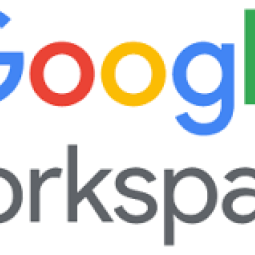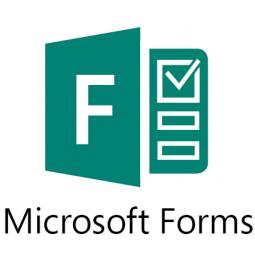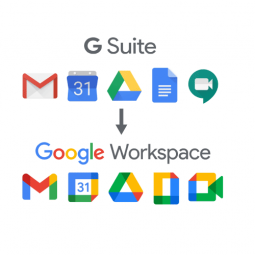Tech foundations encompass the critical technological components that enable not-for-profit organisations and their staff to share information and collaborate effectively. These foundations are designed to support the unique needs of NFPs, optimising operational efficiency and enhancing communication across the organisation.
Core components of Tech Foundations
Computing devices
Computers, Laptops, Mobile Phones, and Tablets: Equip staff with reliable and secure devices suitable for their roles. Regular updates and maintenance should be planned to keep all devices functional and up to date.
Communication tools
- Email and calendars - Utilise cloud-based platforms like Microsoft 365 or Google Workspace to provide robust email services and collaborative calendars. These tools should be accessible across devices to facilitate seamless communication.
- Messaging & video conferencing - Implement modern solutions that support remote communication, such as messaging and video conferencing tools like Zoom, Microsoft Teams, or Google Meet.
Collaboration and file sharing
- File sharing services - Use services like SharePoint or Google Drive to allow staff to create, store, and share documents securely. Ensure these platforms are accessible remotely and include offline synchronisation capabilities.
- Group collaboration platforms - Platforms like Microsoft Teams or Google Workspace foster a collaborative environment with integrated chat, video calling, and file sharing.
Network infrastructure
- Reliable internet and Wi-Fi - Ensure that all locations are equipped with fast and reliable internet connections. Consider implementing dedicated Wi-Fi for visitors to keep the network secure.
- Servers and cloud solutions - Transition to cloud servers where possible to reduce physical infrastructure costs and enhance scalability and reliability.
Security and user authentication
- User authentication - Implement single sign-on (SSO) and multi-factor authentication (MFA) to enhance security while simplifying the user experience.
- Data protection - Regularly review and update security protocols to protect sensitive information and comply with data protection regulations.
Organisational information services
Develop an intranet to disseminate information such as news, policies, and procedures efficiently across the organisation. Ensure that the intranet is user-friendly and accessible from various devices.
Starting with Tech Foundations
For NFPs deciding between Microsoft 365 and Google Workspace:
- Microsoft 365 is often favoured for its comprehensive suite of applications, robust security features, and seamless integration with Windows environments.
- Google Workspace offers a straightforward, user-friendly interface and is generally easier to manage with limited IT resources. It also provides significant discounts for NFPs.
- Both platforms provide essential tools such as email, calendaring, document creation, file storage, and collaboration at discounted or no cost for eligible not-for-profits.
Choosing the right technology
- Compatibility - Choose technology that integrates smoothly with your existing tools and devices. If your organisation primarily uses Windows PCs, Microsoft 365 might be more compatible, whereas Google Workspace may be more suitable for organisations using a variety of devices including ChromeOS.
- Support and Partnerships - Consider the availability of technical support and partnership opportunities, which can be crucial for deploying and managing these technologies effectively.
Your Tech Foundations maturity levels
Basic to Advanced
As your organisation matures, so should your tech foundations. Progress from having essential devices and basic email functionality to more sophisticated collaborative tools and robust information systems that support advanced needs and integration capabilities.
| Challenged | Basic | Intermediate | Advanced | |
|---|---|---|---|---|
| User devices (Desktops, mobiles and tablets) | Devices can be unreliable and provide limited support for remote working | Staff have access to a reliable device that supports them wherever they need to work. An IT asset list of end-user devices is maintained. | Devices are configured well, covered by hardware warranty and are user-friendly for staff to use | Staff and managers are highly satisfied with our devices. They can easily evolve to support future needs |
| Digital collaboration platforms: Email, calendar, files etc | An NFP collaboration platform (Google Workspace, MS 365 or similar) is not used | One core NFP collaboration platform is used for email, file sharing, video conferencing and collaboration. | Staff find collaborating & navigating file structures, information, policies & news simple and intuitive. Licensing is appropriate. | Staff can easily collaborate with stakeholders outside the organisation. |
| Internet, Wifi and Connectivity | Office and remote connectivity don't effectively support remote working | Staff connectivity provides staff with the basic necessities to conduct their work, either in the office or remotely. | Telephony system runs in the cloud and supports staff working anywhere with an internet connection. | Telephony, videoconferencing and calendaring systems are integrated & can expand to support future needs |
| IT support | Things are fixed as quickly as possible, but this can take a long time | IT support is reasonable, but not always as fast as required. | We have a skilled support team, either internal staff or an MSP. Issues and requests are tracked, prioritised, and managed. Larger sites/departments have key staff identified & trained as an IT champions. | Staff and management are very happy with IT support services |
Conclusion
Adopting the right tech foundations is crucial for not-for-profits to effectively meet their mission goals. By choosing the appropriate platforms, tools, and technologies, NFPs can ensure their teams are well-equipped to communicate, collaborate, and operate efficiently in a secure environment.





Status message
Thanks for rating this guide.